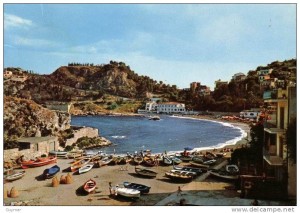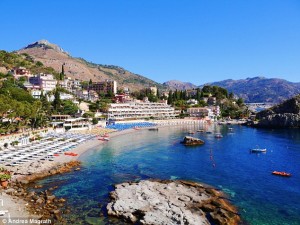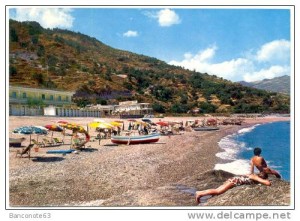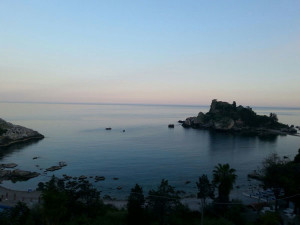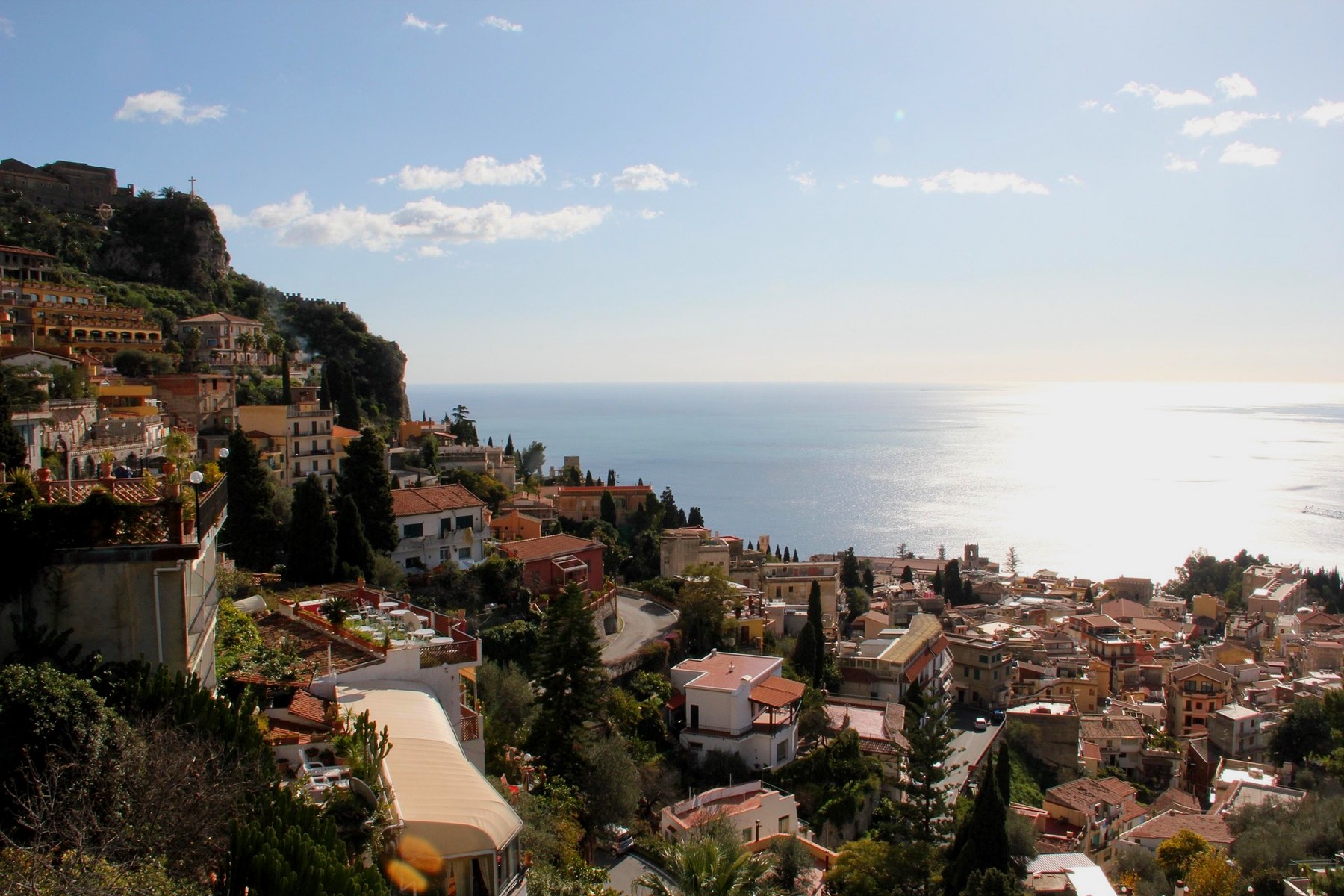THINGS TO DO IN TAORMINA
Teatro Greco
Maybe this is Taormina‘s reason to exist, one of Sicily‘s unmissable sights. The crowds flowing from Piazza Vittorio Emanuele past an unbroken parade of tourists shops will point you towards the theatre (daily 9 am to 1 hour before sunset; charge). Once you are in, it is a setting that is pure drama, with the cavea (horseshoe of tiered seats) hewn out of the hillside. Citrus groves carpet the slopes, while the cliff face is a tangle of cacti and orchids.In Greek theatres, sea and sky were the natual backdrop; the Romans, turning it into an arena for gladiatorial combats at the end of the first century AD, preferred to add a double portico, niches and columns that must have obscured the views of Etna and sea.
In high season, the theatre is best explored early in the morning or near closing time, to avoid heat and crowds. The theatre is still used today as venue for an international arts festival, Taormina Arte, which presents drama, cinema, ballet, music from June to August.
Odeon
The odeon (odeum), a much smaller Roman theatre, is located near the Church of Saint Catherine (Santa Caterina), which obscures it. On the site of Saint Pancras Church, just beyond Porta Messina (the Messina Gate) outside the medieval city walls, was a temple dedicated to Zeus, a wall of which was incorporated into the present structure. (Saint Pancras is believed to have been an early priest or bishop of Taormina’s Christian community.) Another eastern Sicilian example of the phenomenon of temples being converted to churches with the introduction of Christianity is the cathedral of Syracusa.
Naumachie
Just off the Corso lies the Naumachie, a hybrid construction second only to the Greek Theatre in importance. Originally a vaulted cistern connected to the city baths, it evolved into a Hellenic nymphaeum and Roman gymnasium. The atmospheric arched buttress walls remain, propping out the Corso.
Giardino pubblico
It is a short stroll to the Giardino pubblico, a lush park on Via Roma bequeathed to the town by an eccentric Englishwoman in the 20s. Florence Trevelyan adorned her hanging gardens with pagoda-style follies and observation towers for bird-spotting (she was a keen amateur ornithologist). The tiered gardens are linked by mosaic paths and wind past tropical plants, from spiky cacti and lilies to dull English hedges. From dawn to dusk, this place will offer you some outstanding views on Giardini Naxos bay.
Porta Messina and Porta Catania
The old town of Taormina, nowaday mainly hiking and shopping street, still appears enclosed by two medieval gates, “Porta Messina” and “Porta Catania”, and a central gate called “Torre dell’orologio” (Clock Tower), built as openings in the walls of the fortification and having as ending point the center of the defensive system: Castel Tauro. Porta Messina, restored at the beginning of the 19th century, was named Porta Ferdinandea when it was open in 1808 by Ferdinand IV of Bourbon, to change name in 1860 with the Sicilian rebellion against Bourbon kingdom. Porta Catania, in ancient times was known as “Porta del tocco”, because it was close to the homonymous square, “Largo del Tocco”. The square was called “Tocco” because in Norman times, here were held pubblic gatherings, announced by the ringing of a bell. It also changed name in 1860.
Corso Umberto
The pedestrianised main street of Taormina, leads throughout the town, from Porta Messina to Porta Catania, revealing 15th century buildings converted into craft shops, boutiques and bars.
Piazza IX Aprile
Halfway down the corso, piazza IX Aprile offers glittering views of Etna and close-ups of preening poseurs at classic cafés such as Wunderbar. Sant’Agostino, the forbidding 15th century church on the square, has been converted into a cosy library and art gallery, confirmed by the cluster of caricaturists and street artists sketching outside. The other Church feels more like a social than a spiritual centre: San Giuseppe’s Rococo interior overflows after a Sunday service; after much handshaking, the congregation spills into the cafés.
Piazza del Duomo
Piazza del duomo is a central meeting place. At sunset, or at the first sign of spring sun, children fetch their footballs, the jeunesse dorée pose, and Taormina’s perma-tanned lounge lizzards, not a dying breed, search for foreign prey. Matrons still swan around in weighty furs: in Taormina, the furcoat parade lasts until March. The Duomo itself, the Cattedrale di San Niccolò, draws crowds to its winter cycle of classical concerts. The crenellated stone facade has a severity that survived. Renaissance remodelling but is softened by the Baroque fountain on the square, which sports seahorses, cherubs and a podgy female centaur. This weird mythological creature is the city symbol, confirmed by a stone centaur unhearted on the Greek site.
Piazza Carmine and Badia Vecchia
Opposite the fountain, steps lead to Piazza del Carmine and the Badia Vecchia. This survives as one of the old town’s most graceful buildings. It’s the sole remnant of a fifteenth century abbey, with the swallow -tailed battlements and twin Gothic windows inside characteristic of Taormina. When it’s open, it offers excellent views out through the windows over the rooftops to the sea.
Castello Saraceno, Madonna della Rocca
Immediately above Taormina, perched on Monte Tauro, the cliff-top cross and chapel of Madonna della Rocca and, just above, the remains of Taormina‘s tumbledown medieval Castello Saracenno, are well worth a visit for the glorious views, down to theatre, town and coastline, and there are a couple of restaurants and cafès here too. Buses taking just a few minutes run up the winding road, but it’s more evocative to walk up – there’s a steep processional path to the chapel just past the Q8 petrol station, taking around 20 minutes. It is a strenuous climb, which should not be attempted in high summer.
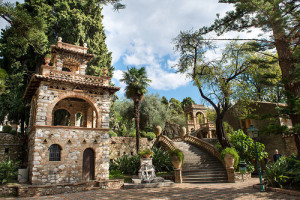
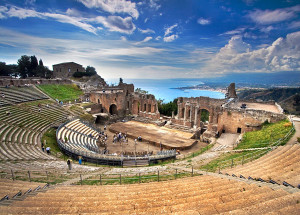
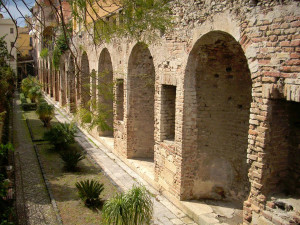
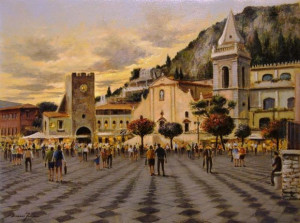
Local Beaches:
The coastline below Taormina, north and south, is immensely appealing – a mixture of grottoes, rocky coves and sand beaches – although much of it is either sectioned off as a private lidos (which you have to pay to use; prices vary from around 5 to 15 euros a day). For wider sections of sand you’ll have to go travel to Giardini Naxos, around a 5km, fifteen minute bus ride south to Taormina, and very much a separate town, with its own holiday trade and nightlife.
Mazzarò
The closest beaches to town are the scintillating pebbled coves at Mazzarò. Which ou can reach by cable car (Funivia) from Via Luigi Pirandello. Nestled between two lush points, this beautiful bay in Taormina is almost completely taken up by commercial bathing facilities, but it’s still possible to find a free spare corner.
Isola bella
In front of the cable car station. On the point and along the strip of land that connects this island to mainland is one of the most spectacular beaches in Sicily, protected as a marine-life sanctuary: Isola Bella. The waters are remarkably clear, and you can rent boats, snorkelling and scuba gear down there.
Spisone
A little further north are the beach bars and restaurants at Spisone, which you can either walk to from Mazzarò (10 minutes) or directly down from Taormina (path from below the cemetery, off Via Guardiola Vecchia, around 30 minutes, though hourly buses from Taormina‘s Piazza San Pancrazio also run here, passing Isola Bella and Mazzarò on the way.
